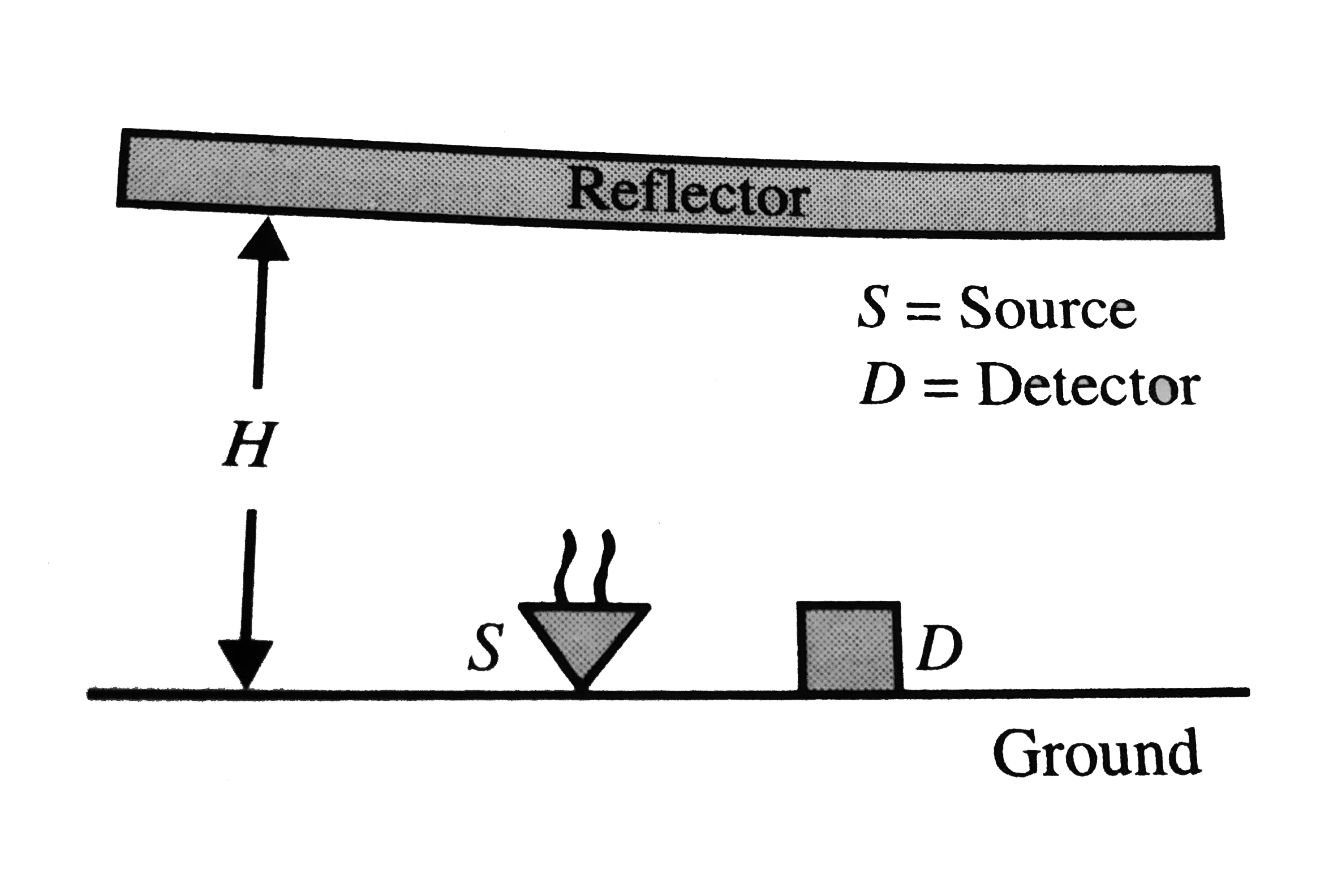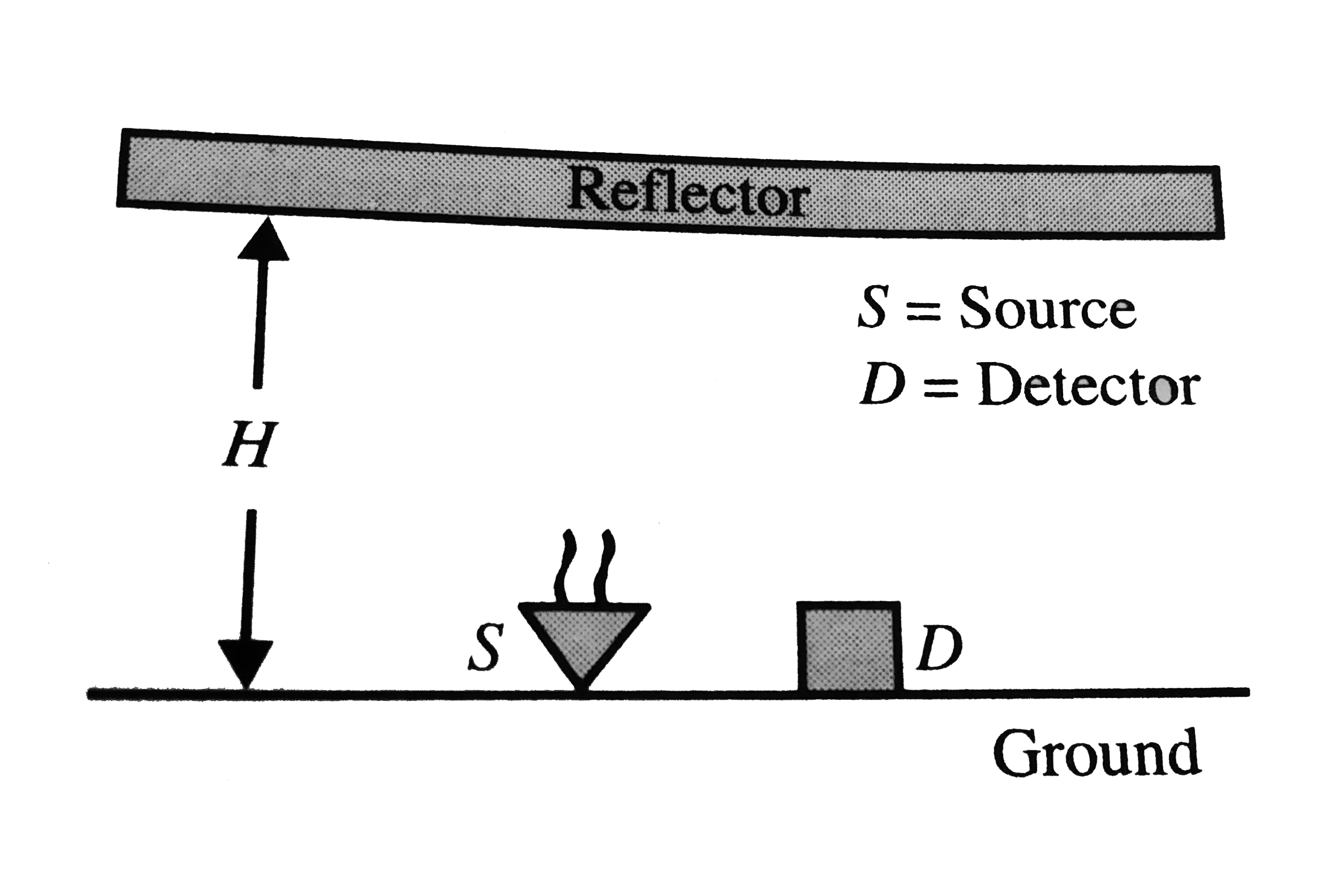A source of sound of frequency 1000HZ moves unifornly along a straight line with velocity 0.8 times velocity of sound . An observer is located at a distance l=250m from this line. Find
(a) the frequency of the sound at instant when the source is closest to the observer.
(b) the distance of the source when he observer no change in the frequency.
To solve the problem step by step, we will break it down into two parts as per the question.
Part (a): Finding the frequency of the sound when the source is closest to the observer.
1. Understanding the scenario:
- The source of sound has a frequency f0=1000Hz.
- The source moves with a velocity vs=0.8v where v is the speed of sound.
- The observer is at a distance l=250m from the line along which the source moves.
2. Finding the speed of sound:
- Let's denote the speed of sound as v. The exact value is not given, but we will keep it as v for calculations.
3. Finding the frequency when the source is closest:
- When the source is closest to the observer, the angle θ formed between the line of motion of the source and the line connecting the observer to the source is 0 degrees.
- The frequency observed f can be calculated using the Doppler effect formula:
f=f0v+vov−vscosθ
- Here, vo=0 (the observer is stationary), and cosθ=1 when the source is closest.
- Therefore, the formula simplifies to:
f=f0vv−vs
- Substituting vs=0.8v:
f=1000vv−0.8v=1000v0.2v=1000×5=5000Hz
Part (b): Finding the distance of the source when the observer sees no change in frequency.
1. Condition for no change in frequency:
- For the observer to detect no change in frequency, the time taken for the sound wave to travel from the source to the observer must equal the time taken for the source to move a certain distance.
2. Setting up the equation:
- Let d be the distance from the observer to the point where the source is at that moment.
- The time taken for the sound to reach the observer is:
t=lv
- The source moves a distance d in the same time t:
t=dvs=d0.8v
- Setting the two expressions for time equal gives:
lv=d0.8v
- Solving for d:
d=0.8l=0.8×250=200m
3. Finding the total distance from the observer:
- The total distance from the observer to the source when there is no change in frequency can be calculated using the Pythagorean theorem:
D=√l2+d2=√(250)2+(200)2
- Calculating:
D=√62500+40000=√102500≈320.31m
Final Answers:
- (a) The frequency of the sound when the source is closest to the observer is 5000 Hz.
- (b) The distance of the source when the observer sees no change in frequency is approximately 320.31 m.
- The source of sound has a frequency f0=1000Hz.
- The source moves with a velocity vs=0.8v where v is the speed of sound.
- The observer is at a distance l=250m from the line along which the source moves.
- Let's denote the speed of sound as v. The exact value is not given, but we will keep it as v for calculations.
- When the source is closest to the observer, the angle θ formed between the line of motion of the source and the line connecting the observer to the source is 0 degrees.
- The frequency observed f can be calculated using the Doppler effect formula:
f=f0v+vov−vscosθ
- Here, vo=0 (the observer is stationary), and cosθ=1 when the source is closest.
- Therefore, the formula simplifies to:
f=f0vv−vs
- Substituting vs=0.8v:
f=1000vv−0.8v=1000v0.2v=1000×5=5000Hz
- For the observer to detect no change in frequency, the time taken for the sound wave to travel from the source to the observer must equal the time taken for the source to move a certain distance.
- Let d be the distance from the observer to the point where the source is at that moment.
- The time taken for the sound to reach the observer is:
t=lv
- The source moves a distance d in the same time t:
t=dvs=d0.8v
- Setting the two expressions for time equal gives:
lv=d0.8v
- Solving for d:
d=0.8l=0.8×250=200m
- The total distance from the observer to the source when there is no change in frequency can be calculated using the Pythagorean theorem:
D=√l2+d2=√(250)2+(200)2
- Calculating:
D=√62500+40000=√102500≈320.31m
- (a) The frequency of the sound when the source is closest to the observer is 5000 Hz.
- (b) The distance of the source when the observer sees no change in frequency is approximately 320.31 m.
Topper's Solved these Questions
- BOOK - DC PANDEY ENGLISHCHAPTER - SOUND WAVESEXERCISE - Level 1 Assertion And Reason10videos
SOUND WAVES
- BOOK - DC PANDEY ENGLISHCHAPTER - SOUND WAVESEXERCISE - Level 1 Objective34videos
SOUND WAVES
- BOOK - DC PANDEY ENGLISHCHAPTER - SOUND WAVESEXERCISE - TYPE 5.2videos
SOUND WAVES
- BOOK - DC PANDEY ENGLISHCHAPTER - SOLVD PAPERS 2017 NEET, AIIMS & JIPMEREXERCISE - Solved paper 2018(JIPMER)38videos
SOLVD PAPERS 2017 NEET, AIIMS & JIPMER
- BOOK - DC PANDEY ENGLISHCHAPTER - SUPERPOSITION OF WAVESEXERCISE - Level 2 Subjective8videos
SUPERPOSITION OF WAVES
Similar Questions
A source of sound of frequency 1.8kHz moves uniformly along a straight line at a distance 250m from observer. The velocity of source is 0.8C where C is the velocity of sound. Find out the frequency of sound received by observer (in kHz) at the moment when the source gets closest to him.
View SolutionA source of sound with natural frequency f0=1800Hz moves uniformly along a straight line separated from a stationary observer by a distance l=250m. The velocity of the source is equal to η=0.80 fraction of the velocity of the sound.
Q. The distance between the source and the observer at the moment when the observer receives a frequency f=f0 is
 View Solution
View Solution
Knowledge Check
- Question 1 - Select One
An observer moves towards a stationary source of sound. The percentage change in the apparent frequency is
AzeroB0.05C0.1D0.2 - Question 2 - Select One
A sound source is moving towards a stationary observer with 1/10 of the speed of sound. The ratio of apparent to real frequency is
A109B(109)2C(1110)2D1110
A source of sound with natural frequency f0=1800Hz moves uniformly along a straight line separated from a stationary observer by a distance l=250m. The velocity of the source is equal to η=0.80 fraction of the velocity of the sound.
Q. Find the frequency of osund received by the observer at the moment when the source gets closest to him.
 View Solution
View SolutionA source of sound with natural frequency f0=1800Hz moves uniformly along a straight line separated from a stationary observer by a distance l=250m. The velocity of the source is equal to η=0.80 fraction of the velocity of the sound.
Q. Find the frequency of osund received by the observer at the moment when the source gets closest to him.
 View Solution
View SolutionA source of sound emitting a note of frequency 200 Hz moves towards an observer with a velocity v equal to the velocity of sound. If the observer also moves away from the source with the same velocity v, the apparent frequency heard by the observer is
View SolutionA source of sound of frequency 500 Hz is moving towards an observer with velocity 30 m/s . The speed of sound is 330 m/s . the frequency heard by the observer will be
View SolutionDoppler shift in frequency of sound is independent of (Source is moving on the straight line joining source and observer)
View Solutionif the speed of a sound source is equal to the speed fo sound and the source is moving away from the observer, then the ratio of apparent frequency to the original frequency is
View Solution
